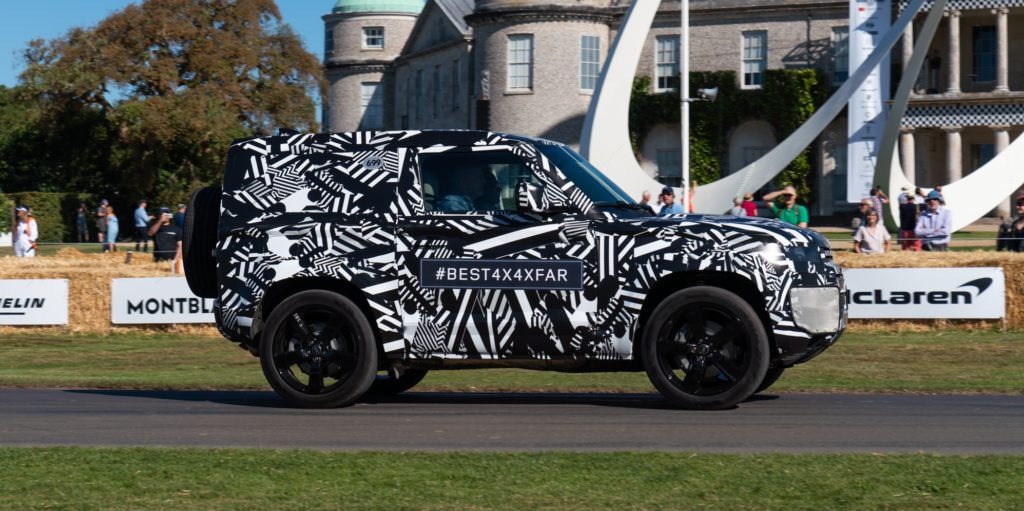Goodwood Festival of Speed highlights the decline of traditional motor shows
04 July 2019

4 July 2019
This weekend’s Goodwood Festival of Speed in the UK represents not just a pageant of motorsport festivities, but is also an example of the type of event that manufacturers are leaving traditional motor shows for in their droves.
While names such as Aston Martin and Ferrari could be expected to be showcasing new vehicles at Goodwood, alongside such racing alumni as Mercedes and Yamaha, names such as Ford, Volkswagen, Honda and even off-road champion Land Rover would seem more at home in the great halls of Frankfurt, Detroit or Paris.
Yet these brands will have more than just a presence in the fields surrounding the famous hill climb, with each debuting vehicles for the UK, if not global, market. It is a clear sign that events which pull in a crowd for which car launches are a simple side-line, or events where vehicle interactivity is available, are more critical when it comes to show planning than a static hall display.
New displays
Ford, for example, recently unveiled its Puma, the old nameplate resurrected for the small SUV market. It was an obvious choice; the Kuga (albeit spelt differently for the modern market) was once a larger coupe offered above the small Puma coupe. The carmaker will have the new model on show to the public for the first time at the Festival of Speed (FoS), giving those interested buyers a first glimpse of what to expect when the car goes on sale later this year. In the typical surroundings, there will also be a faster version of its current GT model on display too.
Honda will have its Honda-e electric vehicle (EV) on show, the model recently voted by Autovista Group readers as the most anticipated battery electric vehicle (BEV). Again, the Honda-e may be seen running, rather than in its recent static display position at Geneva.
Volkswagen (VW) will also show its ID.3 full electric car, albeit in disguise, while Land Rover will take the same route with its new Defender.
Performance options
From the supercar stable, Aston Martin will run up the hill a camouflaged prototype of its DBX SUV that will be unveiled later this year. McLaren will show off its GT, a two-seater powered by a V8 engine that is the automaker’s answer to ultra-luxury and exotic supercars meant for the road and long distances, as well as its Senna GTR track-focused hypercar.
Ferrari will use Goodwood to display two one-off cars – the P80/C, based on the 488 GT3 race car, and the open-roofed SP3JC, based on the F12tdf.
The unveilings and debuts show that car manufacturers are still interested in vehicle shows, albeit a different kind. The FoS has grown from a traditional motorsport pageant into the UK’s leading motor show, a position that not only the London Motor and Technology Show is fighting to usurp, but is also causing concern for events including Paris, Geneva and the Frankfurt IAA.
Traditional death
Carmakers are scaling back their budgets and concentrating on events where they cannot only show their latest vehicles to an audience of enthusiasts but where they can also demonstrate them properly. The FoS includes the ′moving motor show’ on its first day, where hill climb action is limited to new cars, and where customers can book to take these recently launched models up the famous hill, before superbikes, classic sports cars and modern-day racers make their mark. The interactivity, and audience, appeal more to these brands than a static display in a large hall.
This changing type of event – and the preference for it – has not gone unnoticed by those leading global events. The London Motor Show was reborn four years ago with a view of attracting enthusiasts and families while giving opportunities for test drives. The Detroit event has undergone a radical transformation for next year, not only moving from its traditional winter slot to summer but also including new driving pavilions and moving beyond the halls into the surrounding parks and even the city itself. The US show referenced FoS as its inspiration.
Europe changes
The Paris Motor Show has also announced a new direction, centring itself on a festival experience and linking with the popular Paris Fashion Week for its 2020 event. There will be themed itineraries, a new, more organised test-drive centre and better social spaces. Festive events will be organised for all ages: concerts, shows, talks, fun workshops. This new Motor Show will strengthen the relationship between the trade show and its enthusiastic attendees, according to the organisers.
For the IAA event this year, Ford will return to a motor show ′event’ for the first time since skipping Paris and Geneva – but only due to the need to promote its new European direction, including the Puma and plug-in hybrid (PHEV) models. Peugeot, Nissan and Fiat Chrysler Automobiles (FCA) will be some of the big names not in attendance.
Motor shows need to change – not to attract consumers, but the brands themselves. The audience that attends the traditional motor show is dwindling, due to online research being widely available and a lessening appetite for seeing static cars. The once great opportunity to sample new models in multiple halls is not appealing. Therefore, carmakers need to either go to events that attract enthusiasts, such as the FoS, or rely on traditional events changing, as with Detroit and Geneva for example. What is clear, especially with the preference for unveiling models at non-specific shows, is that the traditional motor show as we currently know it is a dying breed.